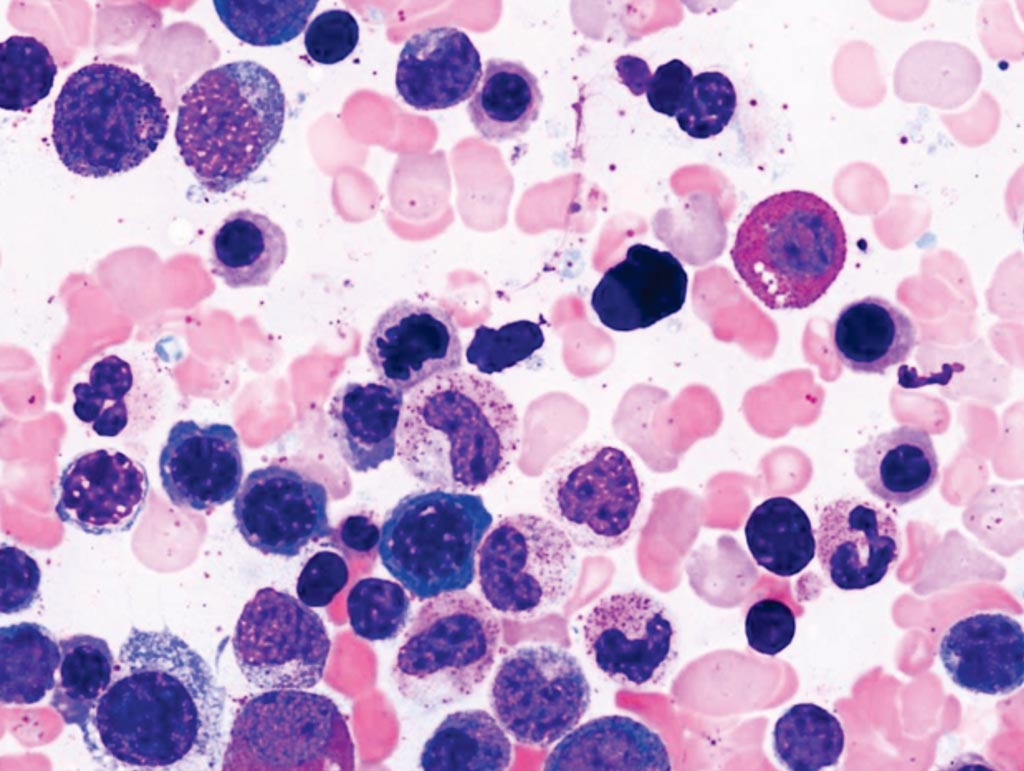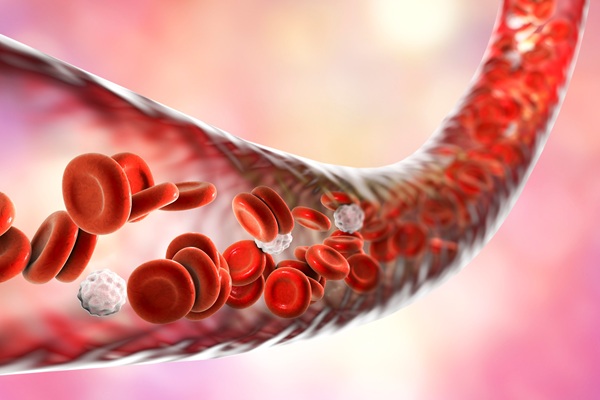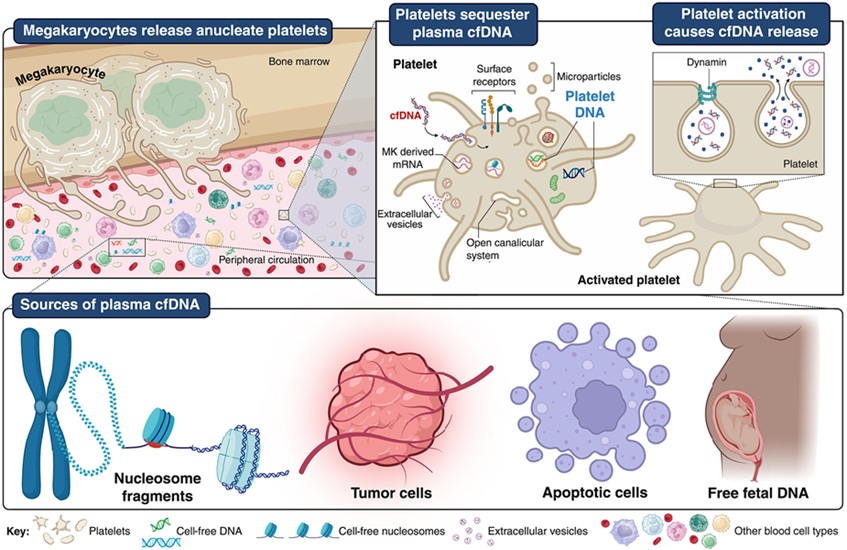Disease Progression Apprised by Post-Treatment Mutation Sequencing
By LabMedica International staff writers
Posted on 26 Sep 2018
Allogeneic hematopoietic stem-cell transplantation is the only curative treatment for patients with myelodysplastic syndrome (MDS). The molecular predictors of disease progression after transplantation are unclear.Posted on 26 Sep 2018
Myelodysplastic syndromes are a group of cancers in which immature blood cells in the bone marrow do not mature and therefore do not become healthy blood cells. Early on, there are typically no symptoms, but later symptoms may include feeling tired, shortness of breath, easy bleeding, or frequent infections.

Image: Bone marrow aspirate smear from a patient with myelodysplastic syndromes, unclassifiable (MDS-U) (pancytopenia and -7 cytogenetic abnormality). Occasional late mitotic figures in erythroid elements are present, but no significant erythroid or myeloid dysplasia exists (Photo courtesy of Dr. Robert P. Hasserjian, MD).
Scientists at the Washington University School of Medicine in St. Louis (St. Louis, MO, USA) and their colleagues sequenced bone marrow and skin samples from 90 adults with MDS who underwent allogeneic hematopoietic stem-cell transplantation after a myeloablative or reduced-intensity conditioning regimen. They detected mutations before transplantation using enhanced exome sequencing, and evaluated mutation clearance by using error-corrected sequencing to genotype mutations in bone marrow samples obtained 30 days after transplantation.
The team used the HiSeq 2500 instrument to do enhanced exome sequencing on matched bone marrow and normal skin samples from the 90 adults with MDS, secondary acute myeloid leukemia, or MDS stemming from prior cancer treatment. The investigators identified 35 patients who had post-treatment MDS progression over a median of nearly five months. Disease progression rose, and progression-free survival at one year dipped from more than 59% to 31.3%, on average, in individuals with mutant alleles present at frequencies beyond 0.5% in 30-day post-treatment samples.
The team subsequently demonstrated that it could identify pre-treatment mutations in 79% of the patients by profiling a smaller set of 40 genes with panel sequencing. Post-treatment samples tested with that panel sequencing method again picked out individuals more prone to disease progression after one year, using 0.5% mutant allele frequency as a cutoff. The authors concluded that the risk of disease progression was higher among patients with MDS in whom persistent disease–associated mutations were detected in the bone marrow 30 days after transplantation than among those in whom these mutations were not detected.
Matthew J. Walter, MD, a professor and senior author of the study, said, “A genetic analysis is a much more precise method of measuring how many blood cells are cancerous. It also lets us find abnormal cells at earlier time points after a stem cell transplant, when there are fewer cancerous cells to find. The earlier we can detect that the cancer is coming back, the more time we may have to intervene.” The study was published on September 13, 2018, in The New England Journal of Medicine.
Related Links:
Washington University School of Medicine in St. Louis













